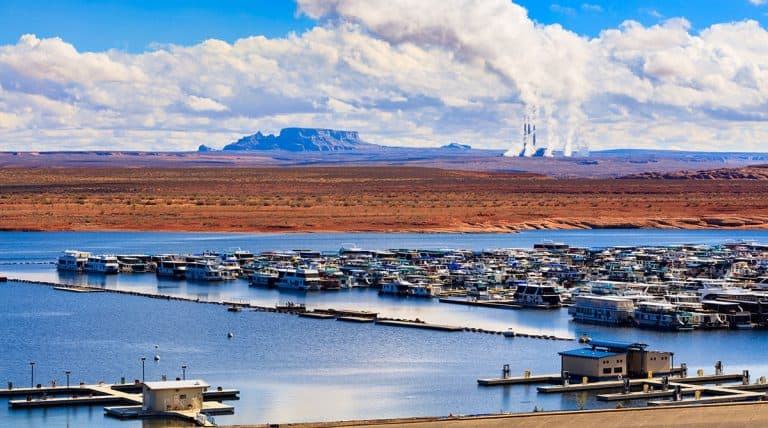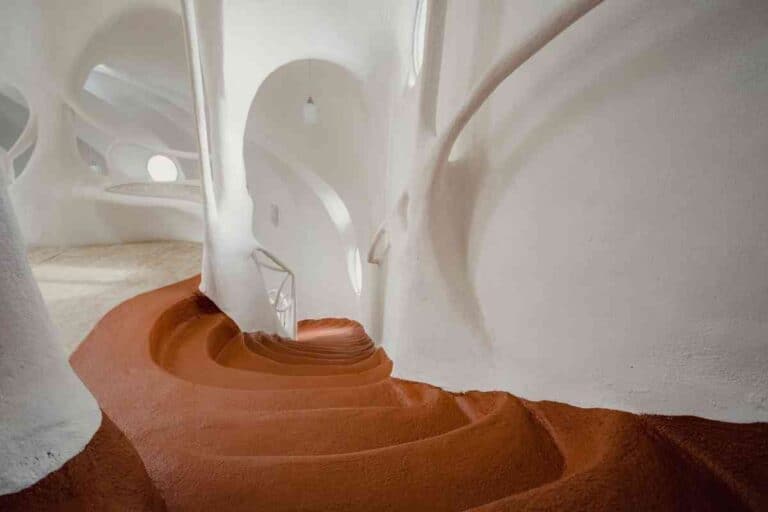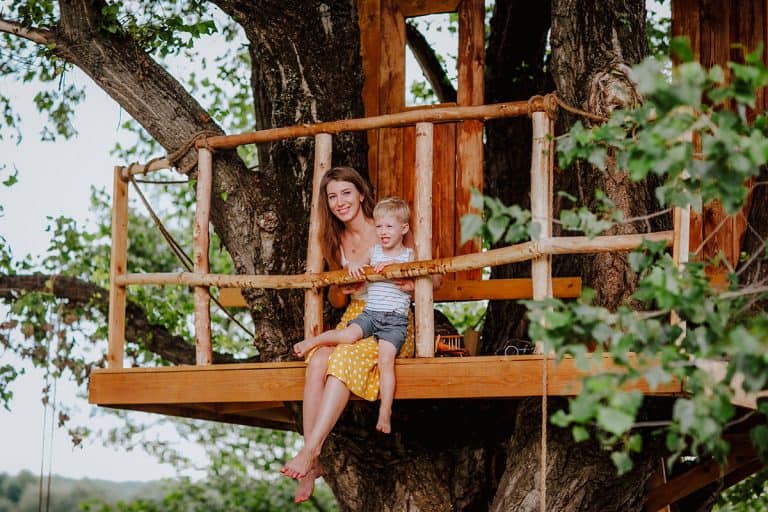RV vs Tiny House: My Bumpy Road from Dreaming to Doing—and Which One Actually Set Me Free
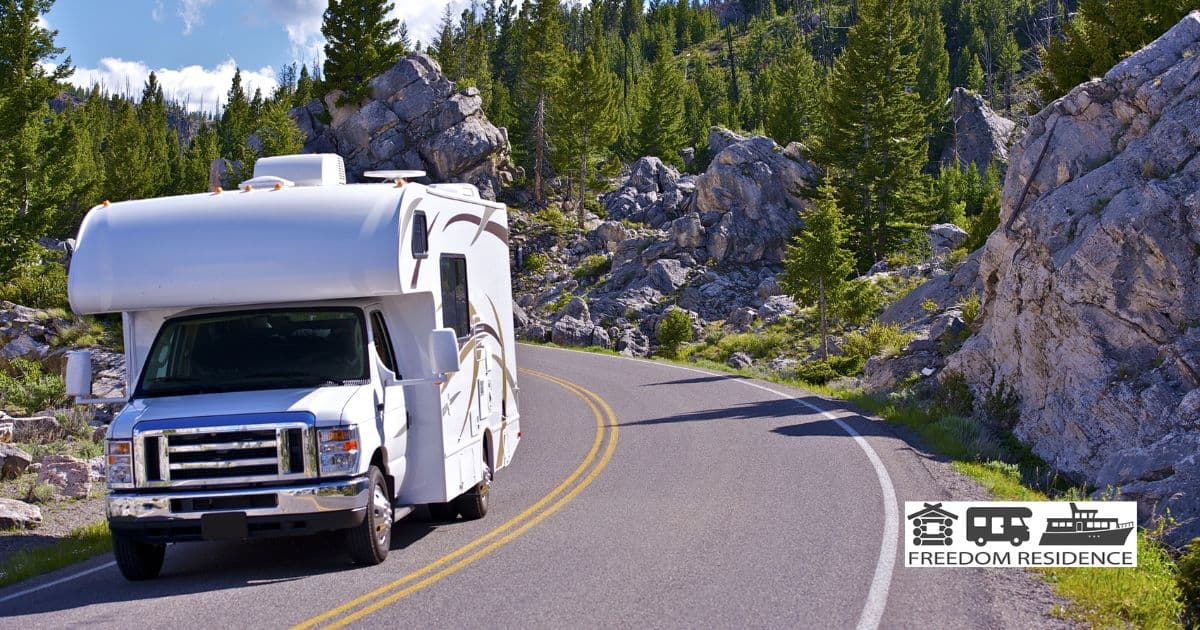
RV vs Tiny House: Choosing Your Own Freedom Adventure
Freedom means something different to each of us. For some, it’s the call of the highway and waking up somewhere new. For others, it’s lasting comfort, roots, and a sense of home wherever we roll or stay. Let’s take a real look at what drives the choice between a tiny house or an RV, what really sets them apart, and which fits our wild hopes—or daily needs—best.
What Sparked My Move to Alternative Living
I’ll never forget that restless itch building in my chest during rush hour, heading back to an apartment that didn’t feel like mine. Bills piling up, space closing in. Our dream was always about more than just “tiny”—it was about breathing room. That’s what lit the fuse.
I saw a neighbor leave his stuffy condo and hit the road in an old motorhome. Got curious. Spent months researching, then sold half of what we owned, took a deep breath, and dove right in. We wanted time outside, not just a new kind of debt. Didn’t want to work just to pay rent, either.
Those early days were rough. Rain leaking through the RV roof. Figuring out dump stations. Missing real water pressure. Still, the sunrise through a dew-fogged window—priceless. It taught us quick: freedom isn’t glamorous, but man, it’s real. If we can claw our way to this lifestyle, so can anybody with a bit of courage and a willingness to improvise.
The Core Differences: Rolling or Rooted?
Here’s what most folks don’t realize: an RV is, at heart, a vehicle—built to move, quick to set up, but not always cozy for the long haul. A tiny house is a house first, wheels second—a home you can park and settle in, but hauling it isn’t nearly as easy as a trailer or camper.
- Construction: RVs are light, with thin walls, sometimes less insulation—they’re ready for the road, not a blizzard. Tiny houses are insulated like regular homes, with solid wood, real windows.
- Mobility: If we want constant travel, RVs win. Tiny homes roll, but not often. Think “occasional moves” versus “go anywhere, anytime.”
- Comfort and Longevity: Tiny homes feel more permanent, sometimes even luxurious. They’re meant to last decades if we care for them. RVs—well, you’ll be fixing stuff, and fast.
With tiny homes, we get a small home vibe—porch, kitchen, even a soaking tub if we want. With RVs, it’s always a compromise. Do we need wheels, or do we want to plant roots?
Who Should Consider Each Option?
Some of us feel alive waking up in a new spot every week. Others crave a patch of land and a porch swing. RVs are made for the wanderers—retirees, remote workers, families who chase good weather and good coffee. Maintenance is part of the deal, but we’ll meet dozens of like-minded folks rolling down the same highways.
Tiny houses are for us when we want to downsize, but not rough it. Maybe we’re on a budget or just tired of landlords. If we love DIY, crave stability, or dream of a little sovereignty—like putting up a rain catch system, building a garden, or staying put for longer stretches—a tiny house hits the sweet spot.
But here’s the catch: tiny houses can run into zoning headaches. Some spots welcome them, many don’t. RVs slide into campgrounds and parks with fewer questions, but the vibe can be…transient. Decide what freedom means: moving fast or putting down roots.
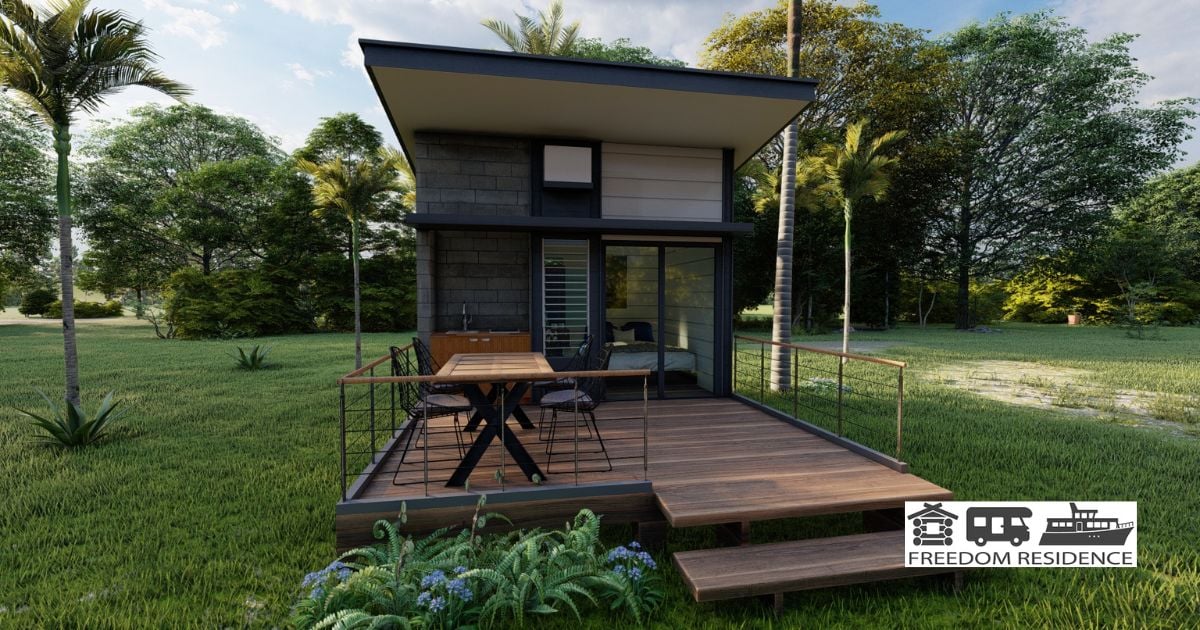
Common Misconceptions Debunked
Let’s be honest—Instagram makes both options look like a fairy tale. When we started, we pictured endless mountain views and campfire breakfasts. In reality, both lifestyles throw curveballs.
- “Tiny houses are cheaper.” Not always. Materials, customizations, and setup costs can match or exceed an RV price tag.
- “RVs don’t feel like home.” Depends on what we put into it—a lot of folks create cozy, full-time homes on wheels with some elbow grease.
- “Tiny houses last forever.” They’ll last, but only if we maintain them as any house. Neglect them, and they’ll rot or rust too.
- “You can park anywhere.” RVs have rules—most cities don’t allow street parking for weeks. Tiny houses? Remove the wheels and it’s a whole new mess of zoning drama.
We learned this the hard way. The reality? Both paths take grit and flexibility. What matters is knowing the limits, embracing the surprises, and loving the life we carve out—bumps and all. For the curious, this guide on pros and cons breaks it down even more.
Budgeting: Counting Every Penny and Every Mistake

If there’s one thing we’ve learned on this wild ride, it’s that mistakes in planning can hit harder than we ever expected. Between sticker shock, sneaky ongoing costs, and our own courtroom of DIY errors, the true price tag of our freedom dreams is always bigger (and more humbling) than the brochure promised.
Upfront Costs: What Surprised Me Most
We started off thinking if we just saved up enough for that shiny new RV or sweet little tiny house, we’d be set. Boy, were we wrong. The price on the ad? That’s just the opening act.
With an RV, we see prices all over the map—from $10,000 for an older used camper to well over $100,000 for a luxury setup. Tiny houses are a different beast. A basic tiny home shell might start around $30,000, but if we add plumbing, composting toilets, solar, and permits? Suddenly, we’re staring down $60,000 or even more.
Let’s not forget land. Even if we “just park it,” city and county rules quickly turn a cheap dream into a costly puzzle. In my notebook: the biggest surprise wasn’t the cost of stuff—it was how fast the “must-haves” and legal hurdles multiplied.
Quick Table: Initial Costs We Didn’t See Coming
| Expense | RV | Tiny House |
|---|---|---|
| Purchase Price | $10k–$100k+ | $30k–$80k+ |
| Land/Parking Permits | Varies widely | Can be mandatory |
| Utility Hookups | Usually included | Often DIY or extra |
| Delivery/Transport | Sometimes included | Almost always extra |
Ongoing Expenses Nobody Warns You About
After the dust settled on our big purchase, that’s when the quiet, nagging costs started adding up. RVs chew through gas—sometimes a full tank in a single trip. Repairs? Don’t even get me started. It felt like every epic sunset also came with a fresh leak, squeak, or busted A/C.
Tiny homes have their tricks, too. Property taxes (if they’re on a foundation), insurance policies that never seem to fit our situation, and heating or cooling that can be trickier than we’d like. Sometimes, park fees or land rental costs blow my monthly budget out of the water.
Then there’s the sneaky stuff: credit card interest (when we bought furniture or solar panels on a whim), fluctuating propane prices, trash pickup, or needing a real PO box when Amazon won’t deliver to “that weird shed at the back of Farmer Bob’s place.” Our budget quickly turned into a living, groaning creature.
Stuff we forgot to budget for:
- Regular maintenance (roof seals, tires, winterizing)
- New gadgets to make the small space livable (fans, heaters, organizers)
- Unexpected rule changes or fines
- Travel expenses when the park kicks us out for seasonal closing
DIY vs Professional Builds: Lessons from the Job Site
We thought going the DIY route would save us a fortune. Sometimes, it did. Other times—well, let’s just say we basically bought the same piece of plumbing three times because YouTube made it look so easy. We’d work late, mess it up, fix it badly, then finally call in a pro—and pay double.
There is something deeply satisfying about building our home with our own hands. We learned skills, collected scars, and swapped horror stories with folks who did it before us. But whenever we tried to cut corners on key stuff (like electrical or roofing), it always came back to bite us. Hard.
Friends who went full-pro got peace of mind—but less control and higher bills. We had to weigh frustration against freedom. Our biggest “wish we knew” advice? Do the jobs you’re confident about, pay for real experts when it matters (water, power, safety). And always leave more time and cash than you think you’ll need, because every mistake costs double in both.
Mistakes that cost us most:
- Using cheap materials, then having to rebuild
- Overestimating our electrical knowledge (and frying circuits)
- Rushing plumbing and flooding half the frame
- Trying to “eyeball” everything instead of measuring twice
Day-to-Day Living: Realities You Can’t Google
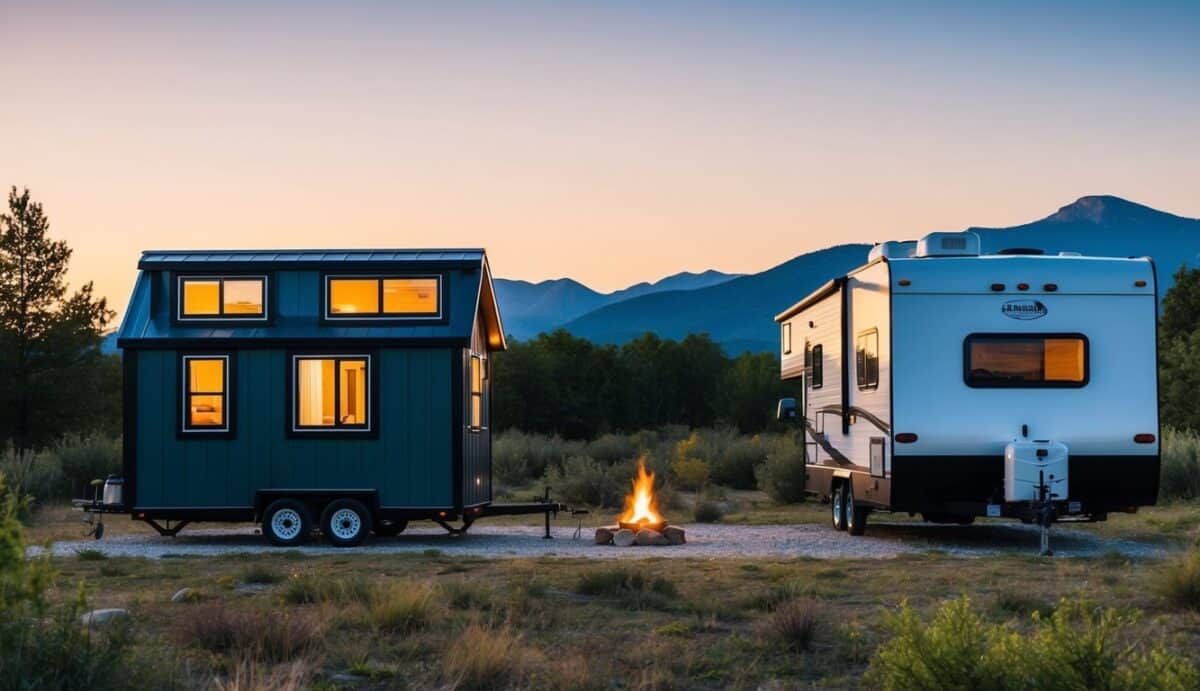
Ever stepped into a 150-square-foot box and tried to figure out where to put your muddy boots, toolbox, and a week’s worth of groceries? We have—and let me tell you, no amount of Pinterest scrolling preps you for the mental gymnastics it takes to make these spaces work in real life. Add in a freezing night with a sputtering furnace or a backed-up composting toilet and suddenly those Instagram feeds feel a million miles away.
Space Hacks: Making Tiny Spaces Feel Huge
Space feels tighter in real life than it ever looks in photos. In both RVs and tiny houses, every inch matters. We’ve learned the hard way that clutter isn’t just annoying—it’s a full-blown crisis when you trip over your shoes at 3am. Our best moves? Hooks on every wall, collapsible furniture, and bins that slide everywhere from under the bed to over the cab. We made peace with the fact that “multi-purpose” is our new way of life. The kitchen table is a desk, a workshop, and—let’s be real—a dumping ground.
Here’s a tip I wish we’d figured out sooner: vertical storage is gold. Shelves above head height, magnetic knife strips, even nets for socks and hats. When we nailed that, we finally felt like we could breathe. But no matter how clever we get, sharing a tiny space means we always know when someone’s in a bad mood—or needs to sneak a midnight snack. Privacy? That’s just a memory.
Comfort and Climate: RV Furnace Nightmares and Tiny House Dreams
There were nights in our old RV when we woke up shivering, cursing the propane furnace. Those things are loud, greedy for fuel, and about as reliable as a rusty lawnmower. In the winter, we wrapped up in every blanket we owned. If you’re looking for year-round comfort, tiny houses are usually better insulated and built for long-term living. That means fewer frozen mornings or sweaty, sleepless nights.
The biggest difference? A well-built tiny house lets us control the climate more like a regular home—with real windows, ceiling fans, and insulation you can actually trust. Still, we learned to be weather chameleons. Sometimes you’ll need to layer up indoors or run a fan all night. But there’s nothing like that feeling when you finally dial in a cozy, dry space—especially after too many nights surviving on soup, socks, and stubbornness.
Keeping Things Running: Maintenance Headaches and Triumphs
Here’s the unfiltered truth: stuff breaks. And it usually happens when we’re tired, broke, or about to leave for a hike. In an RV, maintenance isn’t just about oil changes. We’re talking leaky roofs, wiring that shorts out, and weird smells from the black tank. One time, I spent two days chasing a drip that turned into a flood because I thought I could “just tighten a pipe.” Lesson learned—water always wins.
Tiny houses bring their own joys. Sure, fewer moving parts means less stuff shaking loose on the highway. But plumbing clogs and composting toilets? They’re waiting for us. The good news is, DIY fixes are easier—standard home parts beat RV-specific stuff by a mile. We made friends with duct tape, WD-40, and YouTube tutorials. And every time we fixed something without calling a pro, we felt like champs. The headaches never disappeared, but man, the little victories made us feel capable. That’s real freedom—messy, inconvenient, and kind of amazing.
Mobility and Freedom: Wanderlust or Roots?

Ever wondered if true freedom means chasing new horizons or building a home base? When it comes to RVs and tiny houses, our sense of wanderlust and belonging really gets put to the test.
Life on the Road: The RV Nomad’s Playbook
We’ve all seen those glossy Instagram shots: endless highways, mountains in the rearview, sunrises from a fresh corner of the world every morning. Living in an RV means the adventure pretty much never stops.
I’ll be honest with you—my first few months in an RV felt like pure magic. It was wild how quickly we could change our backyard, whether it was a redwood forest, dusty desert, or beach parking lot. There’s a real thrill in “Where to next?” Freedom isn’t just a buzzword; it’s the promise of never settling for the same old view.
But—and there’s always a but—nomad life gets old fast if we crave community, routine, or just an address to get packages delivered. We have to become pros at finding dump stations, patching roof leaks after a storm at 2 a.m., and meeting neighbors who are gone before we know their names. Adventure calls, but it demands flexibility and a strong sense of self.
Here’s a snapshot:
| Perk | Downside |
|---|---|
| Unlimited Movement | Constant Uncertainty |
| Wild Scenery | No Real Roots |
| Meet Random Folks | Miss Familiar Faces |
If restlessness runs deep, RV living might just scratch that itch in a way nothing else does.
Putting Down Stakes: The Quiet Joys of Staying Put
Now, planting ourselves in a tiny house brings its own quiet victory. I remember when we leveled the trailer, built a little porch, and got to know every bird in the yard. Suddenly, our lives started to have a rhythm: mornings with the same sunrise, friends who remembered our dog’s name, neighbors who actually waved.
There’s peace in knowing that if something breaks, we don’t have to find a new town to fix it. There’s pride in calling a place ours—even if it’s only 300 square feet. Tiny houses on wheels can still move, but honestly, most of us only do it once a year, maybe twice. The real gold is in routine, connection, and maybe even a garden.
We trade in the constant motion for stability. And with stability comes:
- Space for hobbies
- Bonds with local folks
- A deeper sense of home
Some days we miss the road, sure. But, for a lot of us, having a place to return to gives us the freedom to grow roots right alongside our dreams.
Legal Roadblocks and Zoning Lessons
Here’s the curveball nobody warns us about: laws. Because whether we roll or settle, legal hoops and rules shape our lives more than we want to admit. RVs are built to move, so campgrounds and parks mostly welcome us with open arms—no fuss, no big questions.
Tiny houses sound simple, but getting permission to park long term can get hairy fast. Zoning laws aren’t made for life outside the lines. We’ve dealt with local “authorities” telling us to move along, permits costing more than our fridge, and rules that change from county to county. It can feel like we’re working a second job just to keep our homes legal.
It pays to do our homework. Before settling, we tap into local zoning rules, ask other owners for tips, and sometimes, just brace ourselves for a little runaround with city hall. This guide from Movable Roots Tiny Homes breaks down some key differences and is worth a look when you’re mapping out your next move.
Freedom isn’t always about breaking away—it’s about knowing how to play the game, so we can keep living the way we want to.
Self-Sufficiency and Off-Grid Living
There’s nothing like waking up far from neighbors, knowing the world can’t mess with our coffee before it’s brewed. Whether we choose a tiny house or an RV, getting off-grid is where things get real. Our choices in gear, comfort, and connectivity can make or break the adventure.
Solar, Water Tanks, and All the Gear I Wish I’d Bought First
I’ll be honest—we can burn through cash fast chasing the “perfect” setup. The first winter I tried to run off a dinky solar panel and borrowed batteries, I realized I’d underestimated how much power we actually use. RVs usually come with basic solar, but tiny houses? We have to build it all ourselves from the ground up.
Here’s what I wish we’d known:
- Solar panels: Go bigger than you think. Running a fridge, lights, laptops, and a well pump adds up. Tiny houses let us customize for more panels or bigger battery banks.
- Water storage: RVs have built-in tanks—usually 30–100 gallons. Tiny homes need purpose-built tanks beneath the floor or outside. Either way, hauling water gets old. Rain catchment or a nearby creek is huge if it’s legal.
- Generators: Having a backup generator is not optional. Clouds happen. Trust me, even the most “off-grid” folks end up pulling the cord now and then.
If we’re setting up our own place, I say focus on: extra solar, big batteries, and a way to keep things running when the weather turns. If that means cutting out a fancy gadget or two, it’s usually worth it. Tiny homes give us more weatherproofing and room for upgrades than most RVs.
Composting Toilets, Showers, and the Myth of ‘Roughing It’
There’s this myth that off-grid life means stinking, cold bucket baths, and dirty fingernails forever. So not true. Both RVs and tiny houses have good options if we’re smart about our setup.
Composting toilets might freak us out at first, but honestly—they work way better than I expected. In tiny homes, we get to pick from top-shelf models, or even DIY it. RV bathrooms? They’re almost always small, but most have a built-in black tank. That means dumping waste at a station. Which would we rather deal with—emptying a bin of compost or hunting for a dump site at midnight?
Showers come down to water storage and heat. If we plan ahead with bigger tanks, a propane or electric heater, and maybe a recirculating pump, there’s no reason to freeze. Tiny houses often have room for larger showers and a dedicated water heater. Our RV might be tight, but we can upgrade with some real elbow grease.
Living off-grid isn’t about suffering. It’s about choosing our battles—comfort where it counts, simplicity where it doesn’t.
Internet, Power, and Staying Connected Off the Beaten Path
Here comes the kicker: just because we’re off-grid doesn’t mean we want to drop off the map. Staying connected can be the difference between feeling free or totally isolated.
We learned fast that public Wi-Fi is a joke when you’re miles away from anywhere. These days, there are three big options:
- Cellular hotspots: If there’s any signal at all, a cell booster and an unlimited data plan turn our laptop into a lifeline. It’s not cheap, but it works nearly everywhere on the grid fringes.
- Satellite internet: It used to be slow and painful, but services like Starlink are changing the game. Pricey up front, but we can stream, Zoom, and even work from a forest clearing.
- Portable power: Laptops, phones, and routers eat more juice than we think. Run everything through solar with a solid inverter, and keep spare batteries. We found out the hard way: power banks run out fast during storms.
With the right setup, we get the freedom of the wild without losing touch—or the chance to share our journey with those who need a little inspiration that it really can be done. For us, being prepared means we don’t just survive—we thrive.
Community, Loneliness, and Finding Your Tribe
There’s more to life on the road or tucked away in a tiny house than square footage and saving money. The real stories—the good, the tough, and the gut-punching lonely—unfold in the spaces between people. Truth is, finding connection can be the biggest challenge and the greatest reward of this way of living.
Brooding Alone: Loneliness on Wheels or in a Cabin
I’ll be straight with you—there are nights when the rain’s hammering your roof, the woods are black outside, and the silence is so thick it almost hums. Whether we’re parked by the side of a dusty highway in our RV or cozied up in a tiny cabin, loneliness creeps in. It doesn’t care if we’re hauling a fifth wheel or off the grid in the pines.
We leave behind our regular routines and the daily “hellos” at the corner store. Sure, some of us crave solitude, but even the toughest lone wolf can start to feel it. There’s a difference between being alone and feeling isolated.
I’ve had days where I wondered if I made a mistake trading comfort for freedom. Turns out, almost all of us hit that point. But—and this is a big but—loneliness is a signal, not a sentence. It’s the push that gets us reaching out, even when it’s awkward or hard.
Unexpected Friendships and Campfire Gatherings
Funny thing about chasing freedom—we run smack into other oddballs on the same path. Parking at a campground or stumbling into a tiny house meet-up, we find folks who get it. Sometimes it happens around a firepit, sometimes over borrowed jumper cables.
We don’t get to pick our neighbors like in the suburbs. Instead, we swap stories with retirees, artists, wanderers, and young dreamers from all over. Those accidental connections can spark real friendships. We’ve shared meals, fixed each other’s rigs, and traded life advice—not because anyone was forced, but because we needed it.
Campground potlucks, shared laundry days, late-night guitar sessions—these aren’t just perks. These moments add up. We build a tribe, one conversation at a time, even if the tribe is always shifting and never looks quite the same. If you’re curious how some tiny house communities have pulled it off, you can check out this piece on how tiny house communities can work.
Staying Connected Without Giving Up Your Freedom
Let’s face it—most of us choose this life because we want space to breathe. Still, the risk is drifting so far we lose touch with everyone who matters. Keeping connections alive is work, but it’s worth every awkward text and early morning call in sketchy WiFi zones.
We’ve learned to use online groups to find fellow travelers and events. Some of our longest-lasting friendships started as comments on a forum or an invite to a potluck we almost skipped. Places like RV parks or “tiny villages” make it easier—WiFi, community boards, and regular events.
– Use group chats or message boards to plan meetups.
– Don’t shy away from local gatherings.
– If you’re new, introduce yourself—most nomads were in your shoes once.
We’re free, yes, but connection keeps the adventure from turning into exile. The best surprise? Sometimes, the right people find their way into our lives just when we need them, no matter how far off the grid we roam.
Resale, Upgrading, and the Exit Plan
Ever lay awake wondering, “What happens if we want out?” Yeah, I’ve been there—sweating over the future while the coyotes howl just outside camp. It’s easy to dream about the open road or cozy cabin life, but thinking about an exit plan? That’s where most of us freeze up.
Let’s start with RVs. The good news? They’re pretty easy to sell, since there’s a big market of folks looking for the RV life. The bad news: RVs lose value—fast. Like a new car, that sticker price drops the minute we drive off the lot. After a few years, don’t be shocked if it’s worth half (or less) of what we paid. That’s actually pretty common, and you can read more about it in this review of RV depreciation and resale.
Tiny houses—now, these are a different beast. Some tiny homes, especially the well-built ones, can actually hold their value better than RVs. But they’re trickier to sell. We need to find a buyer who loves tiny living, and that pool’s smaller than the RV crowd. Plus there’s the local laws, foundation vs. wheels, and whether or not the home meets code.
Here’s a quick breakdown:
| RVs | Tiny Houses | |
|---|---|---|
| Resale Value | Drops quickly | May hold steady (sometimes) |
| Buyers | Larger market | Limited but growing market |
| Upgrading | Buy/sell/trade is simple | More DIY and customization needed |
One thing’s universal—plans change. Life throws curveballs. Sometimes we need an upgrade, or the call to adventure pulls us in a new direction. For RVs, swapping rigs or upgrading is almost as easy as trading in a truck. With a tiny house, it often means a new project—or rolling up our sleeves for more renovations.
If we’re thinking about an exit, let’s not be afraid to think ahead. Plan for flexibility. Life off the beaten path is about freedom, but smart exits make sure we keep that freedom no matter which way the winds blow.
Lessons Learned the Hard Way
Ever tried to sleep through a thunderstorm while your home rocks like a boat? We have. One night, lightning cracked and the whole RV groaned and flexed. My coffee mug took a nosedive, and we learned fast—RVs are built for the road, but they’ll still test your nerves during wild weather.
Space? Let’s talk about that for a second. We thought we could downsize with just a few smart storage hacks. Turns out, even with all the best intentions, stuff piles up. Shoes by the door, cans under the table, nowhere to hide your mess. We learned to let go. A lot. If it’s not useful weekly, it’s gone.
Maintenance isn’t glamorous—or cheap. There was that time our tiny house’s (very fancy) compost toilet failed during a heatwave. Imagine the smell. Now picture all of us fumbling through repairs, sweating buckets, desperate for a YouTube fix. Temporary fixes add up fast. In an RV, expect stuff to break mid-trip when you’re least prepared—the struggle is real.
Here’s what really stings:
| Hard Lesson | Tiny House | RV |
|---|---|---|
| Weatherproofing | Needs upgrades | Designed for travel |
| Repairs | Expensive | Frequent, mid-journey |
| Space management | Nonstop purge | Every inch counts |
There’s no perfect setup. We trade comfort for freedom, fixes for flexibility, space for simplicity. But man, every bump and bruise has shaped us into folks who don’t just dream about freedom—we live it, bruises and all.
Frequently Asked Questions
We get these questions a lot, and for good reason. Whether we’re dreaming about freedom on the open road or planting roots in a tiny home backyard, there’s a lot to weigh—costs, rules, weather, and how it all feels in real life. Let’s get into it.
What are the long-term costs of living in an RV compared to a tiny house?
When we first hit the road in our old Class C, it felt cheaper than dirt. Campsite fees, gas, and the RV loan—straightforward. But after a year or two, repairs cropped up. RV systems don’t age gracefully, and stuff starts breaking, especially if we’re moving a lot. Insurance and registration can add up, too, depending on where we live.
Tiny houses, on the other hand, usually come with bigger up-front bills. Materials, custom builds, and moving costs (if we haul it) aren’t pocket change. But once it’s parked, the recurring costs drop—no engine to fix, no constant fuel stops. If we own the land or rent a spot long-term, it evens out. We found the break-even point hits around year three or four, sometimes sooner if the RV turns into a money pit.
Can you compare the durability and maintenance requirements between RVs and tiny houses?
Honestly, RVs were never built to be “forever homes.” They’re lightweight, which helps on highways, but that means flimsier walls, floors, and hardware. After our first rough winter, we figured out quickly just how much maintenance it takes—leaky seals, brittle plastic, and stripping screws everywhere.
Tiny houses, especially the ones crafted like small cabins, are often built from real lumber, quality insulation, and solid roofing. That translates to less patchwork and fewer major fixes down the line. In our experience, tiny houses stay tighter, quieter, and don’t rattle apart nearly as fast. There’s a reason folks say tiny houses generally require less frequent maintenance than most RVs.
How do zoning laws affect where you can legally park tiny homes versus RVs?
We’ve butted heads with zoning laws more times than we can count. RVs are seen as vehicles—easier to sneak into campgrounds, official parks, or even a friendly driveway (as long as neighbors don’t complain). RV parks expect us, and nobody bats an eye at a Winnebago for a few months.
Tiny houses are tricky. They’re “houses” in the eyes of many local governments, so parking one and staying put can be a legal mess. Some places treat them like permanent dwellings, so we need permits, hookups, and sometimes full-blown inspections. Others lump them in with RVs for short-term stays, but permanent spots are hard to find. The rules vary a lot, so wherever we want to park, we check the local zoning laws and ask around first. For more on this, check out the details on parking and legal issues for both options.
What are the quality of life differences when living full-time in an RV versus a tiny house?
The deep, honest answer: we felt more at home in our tiny house, but more wild and restless in the RV. RVs are designed for travel—built-ins and pop-outs everywhere, but with lightweight everything and less of a “solid home” vibe. After a while, it felt like living in a rolling shoebox, especially if the weather kept us cooped up inside.
Tiny houses, built for real living, are usually quieter, better insulated, and just feel sturdier. If we wanted a nest to settle into (and maybe swing our elbows once in a while), the tiny home won out. But, nothing beats pulling up the jacks and heading for the next sunrise when we’re itching for a new view. It really comes down to what kind of life we want day-to-day.
Can a tiny house withstand harsh weather conditions better than an RV?
We’ve been through enough sideswipes from Old Man Winter to know: a well-built tiny house will keep us a lot warmer and drier than nearly any RV. RVs just aren’t meant for months of hard freeze or blazing deserts—thin walls, poor insulation, and plastic windows make a difference we can feel in our bones (and bills).
Most tiny homes, especially those built with true four-season materials, handle storms, snow, and heat much better than RVs do. Some can even withstand serious weather events, depending on how they’re anchored and what goes into their shell. If harsh weather is a regular guest, the tiny house is the clear survivor.
What are the pros and cons of building a towable tiny house compared to buying an RV?
Building our own towable tiny house was one of the most rewarding, frustrating, and character-testing adventures we’ve ever had. We got to pick every finish, shed sweat equity, and personalize everything. That freedom comes with big “gotchas”—permits, weight limits, surprises in the build (so many surprises…), and the reality that not every vehicle can pull a beefy house.
Buying an RV is simpler. It’s ready to go, and we don’t have to be master builders or mechanics on day one. RVs tend to be lighter, easier to service, and built with mobility in mind. But we sacrificed sturdiness and the feeling of designing our own space.
One big difference: an RV is a vehicle first, house second, while a tiny house is a house first. Which side we land on really depends on how much we want to roam, how much we want to build, and just how sturdy we want our little world to be.

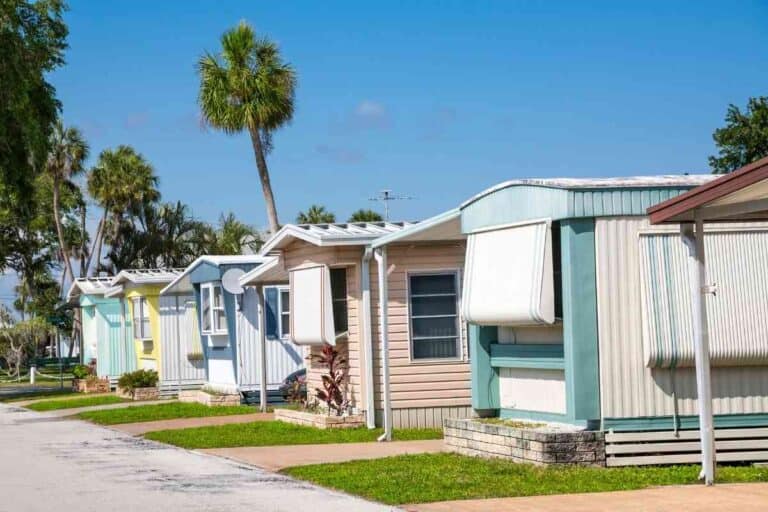
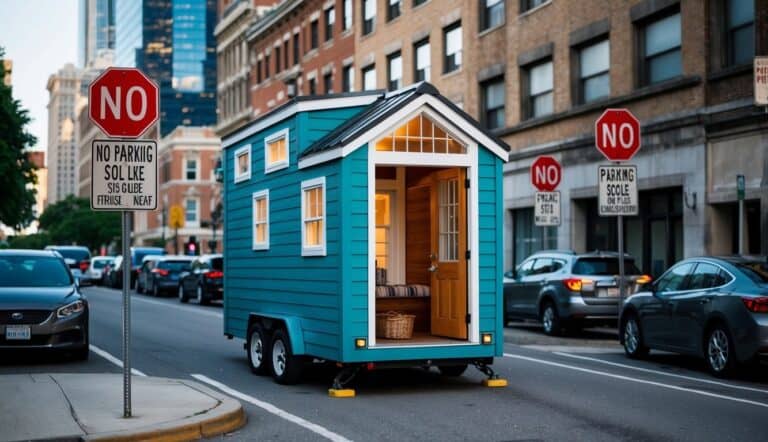
![Are Yurts Good For Hot Weather? [4 Tips To Stay Cool!]](https://freedomresidence.com/wp-content/uploads/2022/05/Can-You-Live-in-a-Yurt-Year-Round-2-768x512.jpg)
